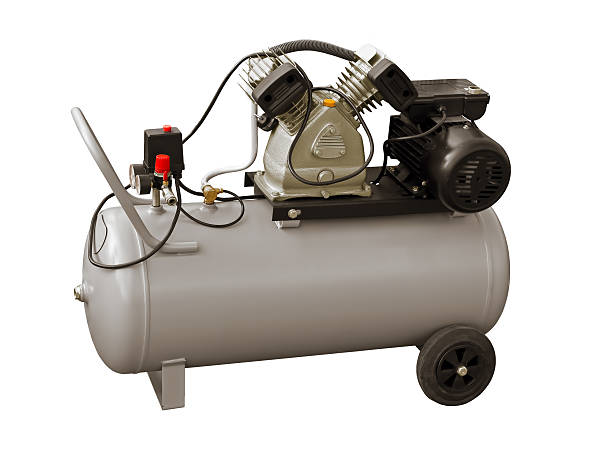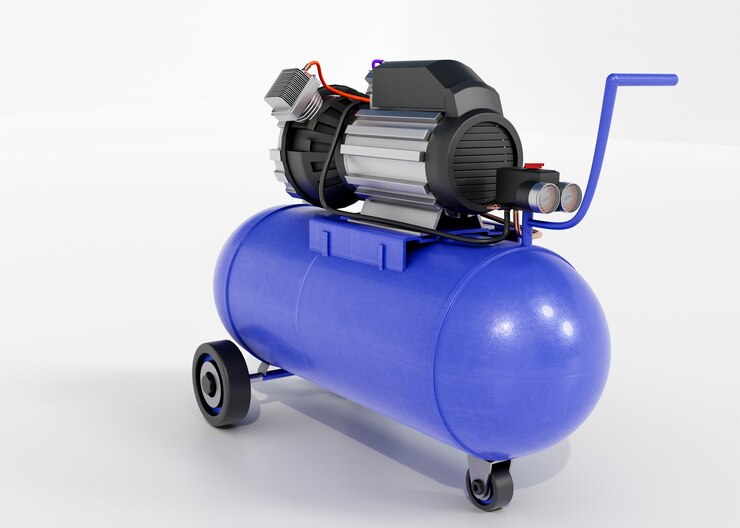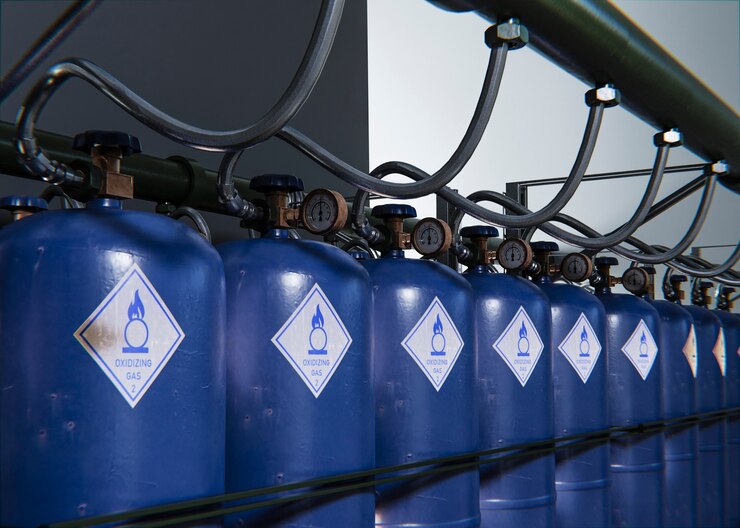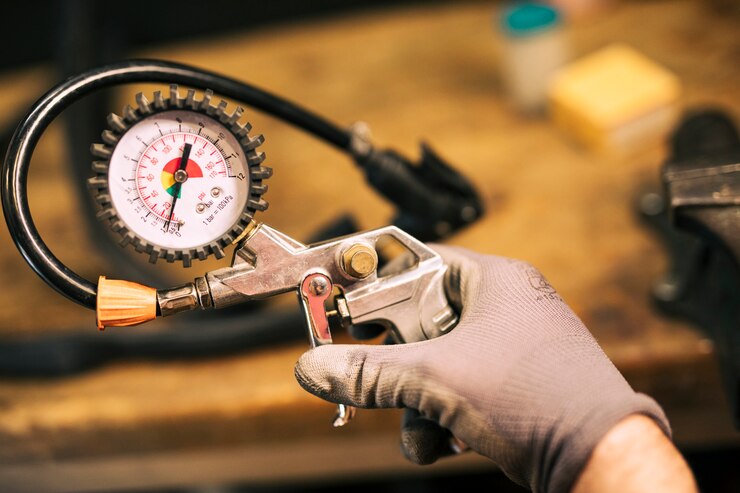Understanding Oxygen Compressor: Types, Uses & Benefits
Unveiling the Power of Oxygen Compressors: A Breath of Fresh Air for Your Health
Breath quality has a big impact on how healthy one can live. Having access to extra oxygen can significantly improve the quality of life for those with respiratory disorders. Here’s where oxygen compressors come into play, giving a concentrated stream of oxygen and serving as lifelines.
This thorough guide delves deeply into the world of oxygen compressors, examining the various kinds, uses, advantages, and important aspects to take into account when selecting the appropriate model. This page will provide you with the information you need to make wise decisions, whether you’re a healthcare professional, caregiver, or just looking for information for personal reasons.
Understanding Oxygen Therapy and the Role of Oxygen Compressors
What is Oxygen Therapy?
Providing extra oxygen to patients who are unable to breathe naturally to keep their blood oxygen levels at a sufficient level is known as oxygen therapy. This may be caused by several respiratory conditions, such as:
- COPD stands for chronic obstructive pulmonary disease.
- Apnea during sleep
- Inhalation
- Fibrosis cystic
- Heart attack
- A case of pneumonia
How Does Oxygen Therapy Work?
A concentrated stream of oxygen is given to the patient during oxygen treatment using a variety of devices, such as face masks, nasal cannulas, and even non-invasive ventilation techniques. As a result, the body’s tissues have access to more oxygen, enhancing general health and well-being.
Presenting the Oxygen Compressor: An Oxygen Source That Can Save Lives
An oxygen compressor is an essential component of oxygen therapy because it offers a consistent and dependable supply of compressed oxygen. There are two primary types of these machines:
- Stationary Oxygen Compressors:
These bigger, more potent machines are used in hospitals and other medical facilities to give several patients a steady supply of oxygen.
- Portable oxygen concentrators (POCs):
These small, lightweight devices are perfect for usage at home or on the go. After drawing in the surrounding air and separating the oxygen molecules, they provide the patient with a concentrated stream.
Unveiling the Magic: How Oxygen Compressors Work
Envision a small factory whose sole purpose is to extract oxygen molecules from the air we breathe. In essence, an oxygen compressor performs that function! These amazing devices are essential to oxygen therapy because they give individuals who require focused oxygen a dependable supply. Now let’s explore the intriguing science underlying the operation of these compressors:
The Selective Adsorption’s Power:
The majority of these compressors, especially POCs (portable oxygen concentrators), use a technique known as Pressure Swing Adsorption (PSA). Specialized zeolite crystals, a porous substance with a significant affinity for nitrogen molecules, are necessary for this procedure. This is a condensed explanation of the procedure:
- Air Intake:
The compressor takes in outside air, which is mostly composed of 21% oxygen and 78% nitrogen.
- Pressurization:
By compressing the air with an internal pump, the system’s pressure is raised.
- Going Through the Zeolite Beds:
Next, the compressed air is sent through two chambers loaded with zeolite, which operates cyclically.
- Nitrogen Absorption:
Because of their size and chemical makeup, zeolite crystals specifically draw in and take up nitrogen molecules. Because of their lower size and less attraction, oxygen molecules can pass through.
- Oxygen Enrichment:
Continuous functioning is made possible by the release of nitrogen that has been previously trapped by one zeolite chamber while it remains trapped by another. Now that oxygen has been added, the remaining gas stream coming out of the chamber is usually purified to 90% or higher.
- Delivery:
A face mask, nasal cannula, or other delivery device recommended by a medical practitioner is used to give the patient concentrated oxygen.
- Regeneration and Recurrence:
A POC’s zeolite beds are intended to constantly regenerate. Nitrogen is captured in one chamber and released in another by a process known as depressurization. In the subsequent cycle, this enables the zeolite to “recharge” and effectively collect nitrogen once more.
Extra Things to Think About:
- Stationary oxygen compressors:
This larger equipment often separates oxygen on a greater scale using a different technology, such as chemical reactions or cryogenic operations.
- Power Source:
Although some versions have a battery backup for use when travelling, portable oxygen concentrators normally run on power. Typically, stationary compressors are connected to a specific power source.
Oxygen compressor is vital for respiratory health and well-being because they produce a life-sustaining supply of enriched oxygen by utilizing techniques such as selective adsorption.
Beyond Medical Marvels: Exploring the Diverse Applications of Oxygen Compressors
Although oxygen compressor is vital in the field of medical oxygen therapy, their uses are not limited to hospitals. These adaptable devices are essential to many different industries because they guarantee a consistent flow of oxygen for a range of processes. Let’s examine a few intriguing applications for these compressors outside of the medical industry:

Powering Industrial Operations:
- Welding and Metal Cutting:
High-temperature operations such as welding and metal cutting require oxygen. The oxy-fuel flame is fueled by compressors, which deliver a consistent supply of oxygen and generate the high heat needed for these operations.
- Glassblowing:
Exquisite glass creations need careful temperature management. Glassblowing torches are fueled by a constant supply of oxygen provided by oxygen compressors, which enables skilled artists to precisely work with molten glass.
- Chemical Processing:
A certain oxygen atmosphere is necessary for several chemical reactions. In a variety of chemical production processes, oxygen compressors maintain a regulated flow of oxygen, maximizing reaction speeds and product quality.
Keeping Life Alive in Water:
- Aquaculture:
The right amount of oxygen in water tanks is necessary to keep fish populations in aquaculture operations healthy. Because they continuously refill oxygen, oxygen compressors are essential in reducing fish stress and mortality.
- Wastewater Treatment:
In wastewater treatment plants, microorganisms are essential for effectively decomposing organic materials. For these microbes to survive, oxygen is necessary. In these systems, oxygen compressors guarantee a steady supply of dissolved oxygen, facilitating efficient wastewater treatment.
Taking Off:
- Aviation:
There is a noticeable drop in oxygen content and air pressure at high altitudes. To ensure the safety and well-being of pilots and passengers during flight, oxygen compressors are used to fill oxygen tanks.
In addition to these uses, oxygen compressors are employed in several other industries, such as:
- Food and Beverage Processing:
When producing food and beverages, oxygen is employed to improve flavour and stop deterioration.
- Environmental Remediation:
Pollutants in soil and water can be biodegraded more quickly by using oxygen.
These adaptable devices support a wide range of sectors by offering a regulated and dependable supply of oxygen, guaranteeing effective operations, high-quality products, and even the health of living things.
Breathing Easier: Unveiling the Benefits of Using an Oxygen Compressor
A person’s quality of life can be greatly impacted by having to fight for breath all the time when they suffer from respiratory issues. Here’s where these compressors come into play, giving a concentrated stream of oxygen that acts as a lifesaver. However, employing an oxygen compressor has several advantages beyond just making breathing easier. Let’s explore the many ways these amazing devices can enhance the lives of people who depend on them:
- Enhanced Energy:
The body’s cells can operate more effectively when there is a consistent flow of oxygen, which raises energy levels and lessens exhaustion. People can now engage in activities that they might have previously found difficult.
- Better Sleep:
Sleep patterns might be disturbed by low blood oxygen levels. Oxygen treatment improves general well-being by encouraging deeper, more peaceful sleep.
- Sharper Mind:
For maximum performance, oxygen is essential to the brain. More oxygen can enhance cognitive performance, resulting in enhanced memory, focus, and concentration.
Decreased Indications and Better Handling:
- Relief from Breathlessness:
The main advantage of oxygen therapy is its ability to reduce dyspnea, a common sign of numerous respiratory disorders. This can greatly enhance a person’s quality of life daily and lessen anxiety related to respiratory problems.
- Decreased Hospitalization Risk:
Oxygen therapy can help avoid complications and lower the chance of hospitalization for respiratory problems by successfully treating symptoms.
- Enhanced Independence:
Patients can engage in social activities and lead an active lifestyle without being dependent on a stationary oxygen source thanks to portable oxygen concentrators. This encourages self-reliance and control over one’s health.
Extra Things to Think About:
- Better Quality of Life for Caregivers:
By reducing anxiety and enhancing general well-being, oxygen treatment can greatly lessen the strain on caregivers.
For those who suffer from respiratory disorders, these compressors offer numerous advantages by serving as a dependable source of extra oxygen. These devices significantly contribute to patients’ and their families’ enhanced quality of life by offering them more energy, better sleep, fewer symptoms, and increased independence.
Conclusion:
With a wealth of design and production expertise, LEiYAO Compressor is outfitted with cutting-edge technical testing facilities and procedures. We provide our global clientele with all-inclusive, one-stop solutions while guaranteeing great product quality and first-rate service.



